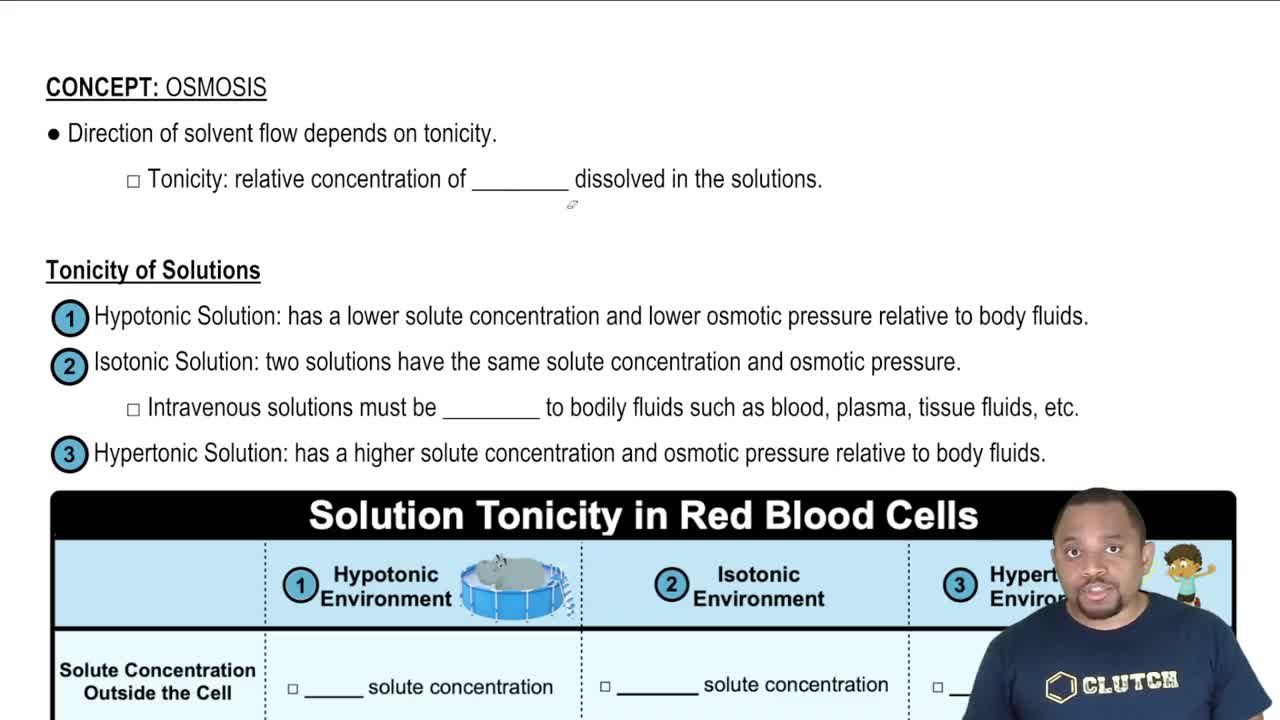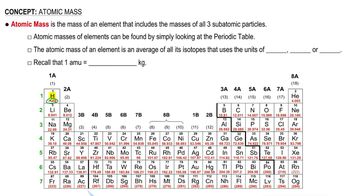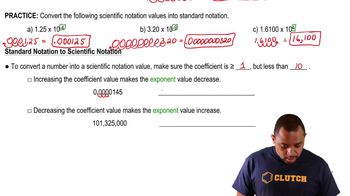Naturally occurring iodine has an atomic mass of 126.9045 amu. A 12.3849 g sample of iodine is accidentally contaminated with an additional 1.00070 g of 129I, a synthetic radioisotope of iodine used in the treatment of certain diseases of the thyroid gland. The mass of 129I is 128.9050 amu. Find the apparent 'atomic mass' of the contaminated iodine.
Ch.2 - Atoms & Elements
Chapter 2, Problem 103
Nuclei with the same number of neutrons but different mass numbers are called isotones. Write the symbols of four isotones of 236Th.
 Verified step by step guidance
Verified step by step guidance1
Identify the number of neutrons in the given isotope, 236Th (Thorium-236). The atomic number of Thorium (Th) is 90, which means it has 90 protons. To find the number of neutrons, subtract the atomic number from the mass number: Neutrons = Mass number - Atomic number = 236 - 90.
Calculate the number of neutrons in 236Th, which is 146. Isotones are nuclei that have the same number of neutrons but different numbers of protons and mass numbers.
To find isotones of 236Th, look for other elements with 146 neutrons. Adjust the atomic number for each element you consider, and calculate the new mass number for each potential isotone using the formula: Mass number = Number of neutrons + Atomic number.
Choose elements with different atomic numbers than Thorium (90) and calculate their mass numbers to ensure they still have 146 neutrons. Common elements to consider are those close to Thorium in the periodic table, such as Uranium (U), Plutonium (Pu), and others.
Write the symbols for the isotones by combining the element symbol with the calculated mass number. For example, if Uranium (atomic number 92) is an isotone, its symbol with the appropriate mass number would be written as U-238.

Verified video answer for a similar problem:
This video solution was recommended by our tutors as helpful for the problem above.
Video duration:
6mWas this helpful?
Key Concepts
Here are the essential concepts you must grasp in order to answer the question correctly.
Isotones
Isotones are nuclei that have the same number of neutrons but different numbers of protons, resulting in different elements. For example, if two isotones have the same neutron count but differ in their atomic mass, they represent different isotopes of different elements. Understanding isotones is crucial for identifying relationships between different atomic species based on their neutron composition.
Recommended video:
Guided course

Osmosis and Tonicity
Mass Number
The mass number of an atom is the total number of protons and neutrons in its nucleus. It is an important identifier for isotopes and isotones, as it helps distinguish between different forms of an element. In the context of isotones, while the neutron count remains constant, the mass number varies due to differences in proton count, leading to different atomic identities.
Recommended video:
Guided course

Atomic Mass
Nuclear Notation
Nuclear notation is a way of representing isotopes and elements using symbols that include the element's chemical symbol, mass number, and atomic number. For example, the notation for thorium-236 is written as 236Th, where 236 is the mass number. This notation is essential for clearly communicating information about isotopes and isotones in nuclear chemistry.
Recommended video:
Guided course

Standard Notation to Scientific Notation
Related Practice
Textbook Question
Textbook Question
Use the mass spectrum of lead to estimate the atomic mass of lead. Estimate the mass and percent intensity values from the graph to three significant figures.
Textbook Question
Use the mass spectrum of mercury to estimate the atomic mass of mercury. Estimate the masses and percent intensity values from the graph to three significant figures.
Textbook Question
Neutron stars are composed of solid nuclear matter, primarily neutrons. Assume the radius of a neutron is approximately 1.0×10–13 cm. Calculate the density of a neutron. [Hint: For a sphere V = (4/3)πr3.] Assuming that a neutron star has the same density as a neutron, calculate the mass (in kg) of a small piece of a neutron star the size of a spherical pebble with a radius of 0.10 mm.
